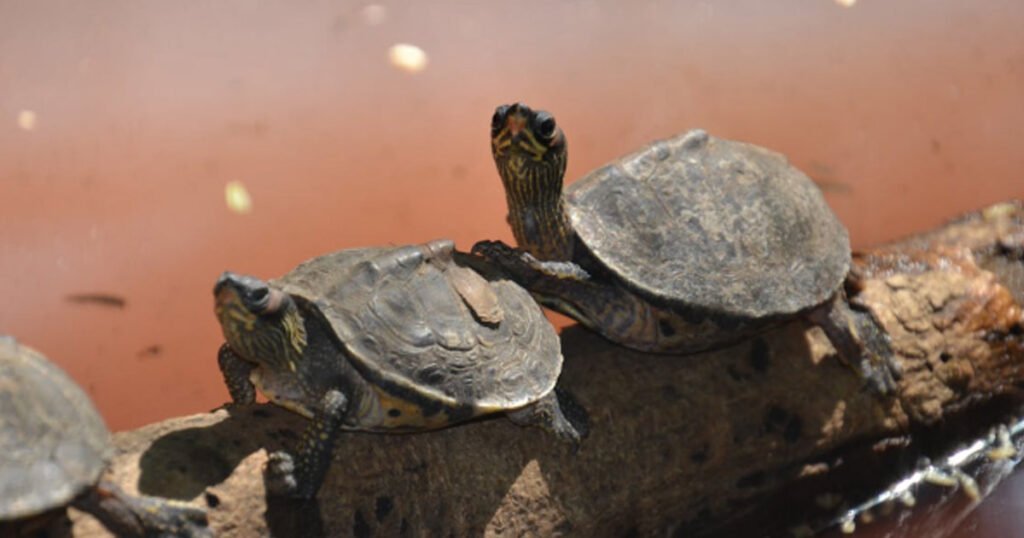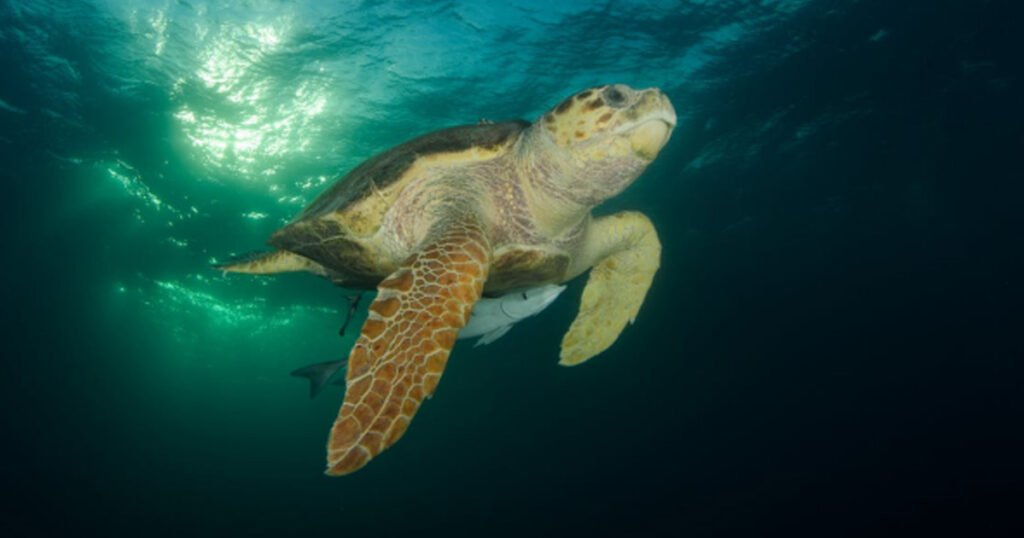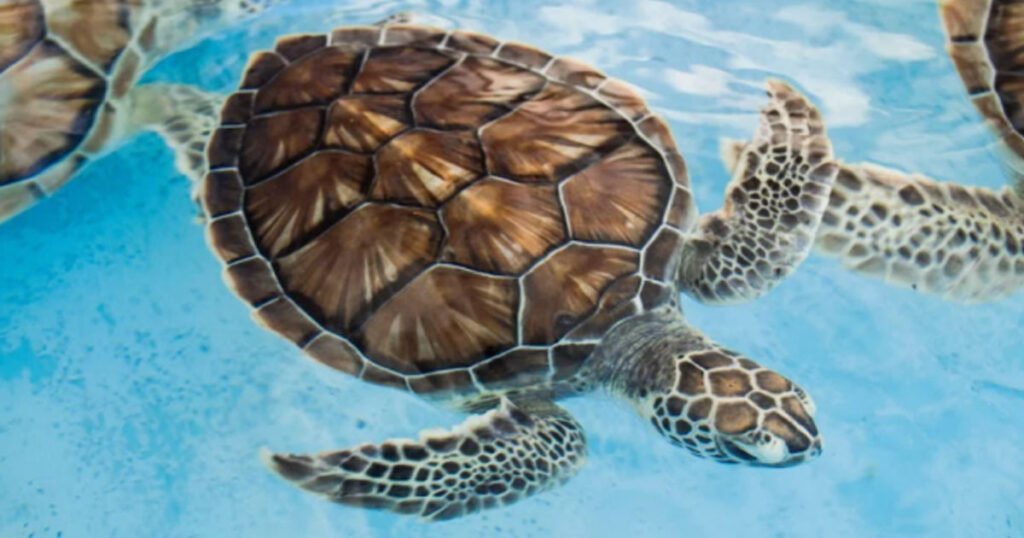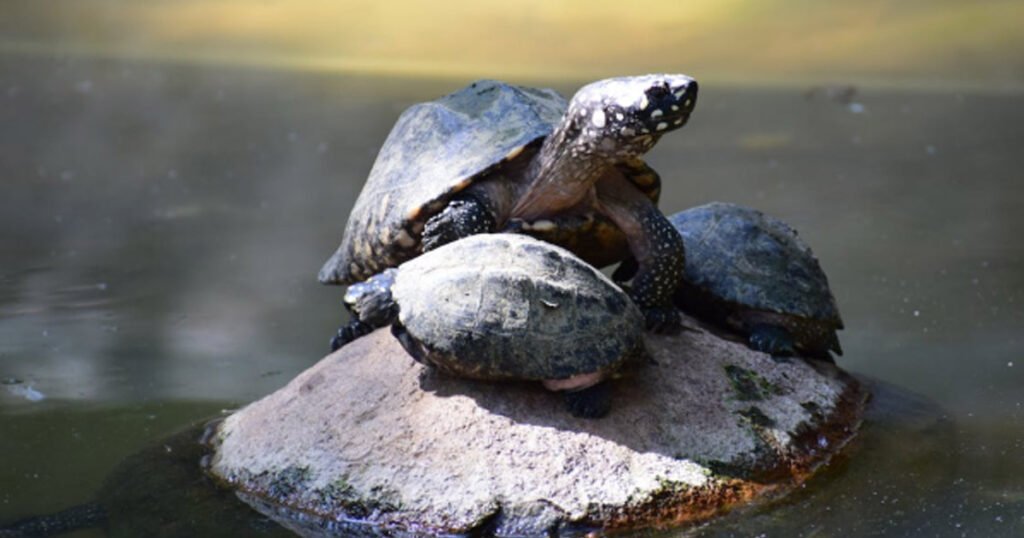As a turtle lover, you may find yourself having intriguing questions like “Does Turtles Have Backbones?” These unique reptiles possess a standout feature: a tough, protective shell in the animal kingdom. Moreover, turtles belong to the vertebrate animal category. Vertebrate animals share a defining characteristic—a backbone or spinal column.
We humans also belong to the vertebrate category. Except for humans, vertebrate animals include dogs, cats, birds, and fish. For all vertebrate animals, the backbone is the most important part of their structure.
The backbone plays a crucial role, providing support and protection for the spinal cord and supporting the muscles. In this article, we’ll go deeper into the topic of “Does Turtles Have Backbones?” while exploring the fascinating world of vertebrate animals. We will also discuss turtle anatomy secrets, particularly their shells and backbones.
Table of Contents
Does Turtles Have Backbones?

Yes, turtles have a backbone. Turtles are vertebrates with backbones and belong to the phylum Reptilia. Their spine is unique; it’s attached to the inside of their hard shell, which they can’t take off. This outer shell, or carapace, is a crucial defense mechanism against predators like sharks, who struggle to penetrate its tough exterior.
However, the underside, or ventral covering, is less protected. Interestingly, turtles and tortoises are the only animals with a backbone whose shoulder blades are inside their rib cage. It gives them great protection while highlighting their anatomical features.
So, the clear answer to the question of “Does a turtle have a backbone”? is yes. It has a backbone, like other vertebrate species, as we already mentioned at the first of this section.
An Overview of Turtle Anatomy

Turtles are unique because of their anatomy.
The Backbone of Turtles
Turtles, like humans, are vertebrate animals, which means they have a backbone or spinal column running along their body. This backbone supports and protects the spinal cord, ensuring the turtle’s structural integrity.
For example, our backbone allows us to stand upright and move freely, while turtles’ backbone supports their body weight and enables various activities. So they can swim and walk on land.
The Structure of the Shell
A turtle’s shell is a unique structure that serves as both armor and home. Turtles have a dome-shaped carapace, which protects their backs. It is composed of tough, bony plates called scutes, which are covered by a layer of keratin.
The plastron, the lower part of the shell, protects the turtle’s underside and is often flat or slightly curved. These two parts are connected together along a bony joint, forming a rigid and protective covering that surrounds the turtle. This shell not only defends against predators but also serves as a framework for the turtle’s skeletal system, including its backbone.
Special Features of the Shell
The hinge in the plastron is a unique adaptation found in some turtle species, such as box turtles. This hinge allows the turtle to retract its head, tail, and limbs fully into the shell and close it tightly.
This mechanism provides additional protection against predators. For example, when threatened, a box turtle can quickly retreat into its shell and close the hinge. It creates a secure barrier against potential threats like predators or harsh weather conditions.
The Importance of Scutes
The scutes on a turtle’s shell serve several significant functions. Not only do they provide protection, but they also play a role in thermoregulation and camouflage. Additionally, the growth rings within the scutes indicate the turtle’s age.
For example, by counting the growth rings on a turtle’s scutes, researchers can estimate its age and gain insights into its life history. This information is valuable for understanding population dynamics, reproductive patterns, and the overall health of turtle populations in the wild.
Mobility and Flexibility
Turtles have evolved unique adaptations for mobility and flexibility despite their rigid shells. For instance, their small, flexible vertebrae in the neck and tail allow them to move these parts with agility. It helps them with activities like swimming and foraging. This flexibility is essential for navigating diverse environments and engaging in various behaviors necessary for survival.
Key Features of Vertebrate Animals Like Turtles

Turtles boast a unique anatomy that places them among vertebrate animals. Their bodies are equipped with several key features typical of this animal group.
Presence of Brain & Spinal Cord
Like other vertebrates, turtles also have a central nervous system comprising a brain and spinal cord. These crucial organs facilitate sensory perception and motor function.
Cephalization and Distinct Head Formation
During embryonic development, turtles undergo cephalization. During cephalization, animals develop distinct head regions with specialized sensory organs like eyes, ears, and brains. This evolutionary adaptation enhances their ability to interact with their environment.
Characteristics of the Notochord
In vertebrates, including turtles, the notochord plays a vital role in early development. The notochord is a flexible rod-like structure found in chordates, including vertebrates like turtles. It runs along the length of the body, providing support and serving as a primitive backbone. Although the notochord extends to the front of the forebrain, its presence signifies vertebrate status.
Pharyngeal Slits in Turtles
Turtles possess pharyngeal slits, which are openings in the pharynx during the embryonic stages. Pharyngeal slits, also known as gill slits, are openings found in the pharyngeal region of the embryos of chordates.
They are initially used for filter-feeding in aquatic organisms but later either develop into structures like gills or are lost during embryonic development. In turtles, these slits play a role during early development but may not persist into adulthood, depending on the species.
Does a Turtle’s Shell Connect to Its Spine?

Yes, a turtle’s shell is connected to its spine. Turtles and their shells are inseparable. The shell grows with the turtle, including a vital part of its skeleton. Made up of about 50 bones, including the spine and rib cage, the shell provides crucial protection.
Are Sea Turtles’ Shells Free of Backbones?
No, sea turtles’ shells are not free from their backbones. Sea turtles’ shells are attached to their backbone, sternum, and ribs, providing vital protection. Unlike many animals, sea turtles’ shells are not separate from their skeletal structure.
The integration of the shell with the spine ensures robust protection against predators and environmental threats. This unique feature distinguishes sea turtles from other creatures and highlights their adaptation to ocean life.
FAQ
Does a Sea Turtle Have a Backbone?
The sea turtle’s backbone is connected to its carapace, forming a protective structure that encloses the spine. Sea turtles have a shell that functions as a crucial part of their skeletal system, even though many people are confused between their shell and backbone.
It provides support and protection. As one of the oldest vertebrates, sea turtles have evolved to endure in diverse marine environments, relying on their distinctive anatomy for survival.
Does a Box Turtle Have a Backbone?
Yes, box turtles, like all other turtle species, have a backbone. The backbone, also known as the vertebral column, is a crucial part of their skeletal structure, providing support and protection for their bodies. This backbone is integral to their ability to move, swim, and carry out essential bodily functions.
Do Leatherback Sea Turtles Have Backbones?
Leatherback sea turtles have a unique shell composition, distinguishing them from other turtle species. While most turtles have hard, bony shells, leatherbacks have soft, rubbery shells. Despite this difference, leatherbacks still have a backbone underneath their shell, allowing them to maintain stability and support. Unlike typical turtles, a leatherback’s spine isn’t connected to the carapace.
But it is covered with leathery/rubbery skin and supported by tiny bones. This specialized adaptation enables leatherback turtles to navigate the ocean’s depths, where immense pressure would crush a rigid, bony shell. They survive in deep-sea environments because of their flexible shells.
Read More: Does A Turtle Have An Exoskeleton
Wrapping Up
The answer to the question “Do turtles have backbones” is definitely yes. Turtles, from box turtles to leatherback sea turtles, all possess backbones that provide crucial support and structure for their bodies. While turtle shell composition varies, like the soft, flexible shell of leatherback turtles, the backbone remains the same. This backbone is a fundamental feature of their anatomy, enabling turtles to thrive in diverse habitats, whether on land or in the ocean’s depths.
